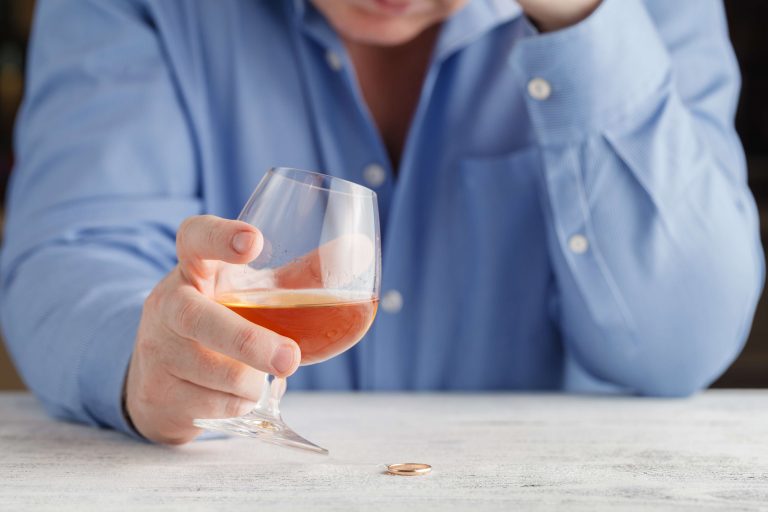Contents
- ABC protects SNc dopaminergic neuronal cell bodies and striatal nerve terminals in vivo
- Campral (Acamprosate) For Alcohol Abuse Treatment
- Symptomatic treatment with ABC restores functional motor alterations in 6-OHDA pre-lesioned rats
- What happens if the individual is drinking while taking Campral?
- In vivo 6-OHDA lesion and treatment paradigms
Interestingly, all these features of AD are found to be shared with those of PD4. By the time of diagnosis, the average loss of striatal dopamine is estimated to be superior to 60%41 and the degenerative process continues in the absence of an adequate intervention and despite L-dopa treatment. Therefore, there is a strong rationale and an urgent need for a disease-modifying neuroprotective therapy that should ideally also possess a symptomatic action how to stop drinking alcohol without aa or rehab to compensate the deficit already attained at the moment of diagnosis. We previously showed that a combination of two already approved drugs, ACP and BCL, provides a neuroprotective activity in AD in vitro and in vivo models18 while restoring the levels of glutamate. Since AD and PD share several genetic, molecular and cellular features, we explored the possibility that ABC could be protective in in vitro and in vivo models of PD as well.
Brains were quickly removed and then frozen in dry ice and stored at −80 °C. Coronal striatal sections were cut at −20 °C using a cryostat, rinsed and then incubated for 40 min with 15 nM -mazindol (DuPont, 17 Ci/mM). -sensitive photographic film was apposed to the slides in X-ray cassettes and exposed at room temperature for 3 weeks.

Its properties are quite similar to brain neurotransmitters, so this gives Campral the ability to influence the chemical balance of excitatory and inhibitory compounds in the brain, just the same way as Librium for alcohol withdrawal. Even though the precise mechanism of action is yet unknown neurotransmission is often stabilized. The significant difference between Acamprosate and naltrexone is on the gamma-glutamyl transpeptidase. An alternative conceptualization of the effectiveness of acamprosate in alcohol dependence is that it is substitution therapy, defined as ‘a medication which has one or more of the pharmacological effects of the drug of interest’ . The receptor pharmacology of acamprosate raises this possibility, as does the evidence described above that it ameliorates some symptoms of withdrawal.
ABC protects SNc dopaminergic neuronal cell bodies and striatal nerve terminals in vivo
Many studies have actively compared acamprosate and placebo to see if there would be significant long-term effects that might prove the inefficacy of Acamprosate as a dependable treatment regimen alcohol tremors the shakes for alcoholism. Most research concluded in favor of the drug. Unlike alcohol withdrawal diazepam which has a known moa, the bone of contention for Campral remains its assumptions to how it works.

The drug also protects cultured cells from excitotoxicity induced by ethanol withdrawal and from glutamate exposure combined with ethanol withdrawal. Acamprosate is useful when used along with counseling in the treatment of alcohol use disorder. Over three to twelve months it increases the number of people who do not drink at all and the number of days without alcohol. The mechanism of action of acamprosate in maintenance of alcohol abstinence is not completely understood.
Campral (Acamprosate) For Alcohol Abuse Treatment
We would like to thank Dr Noelle Callizot and Maud Combe from Neuro/Sys, as well as Dr Rémy Steinschneider from Neuronexperts for their technical advice with regard to in vitro models as well as for their participation in the analyses of the results. We also thank Vincent Girod, Adeline Bouzereau, Delphine Revy and Audrey Bourdet from Syncrosome for participating in performing the in vivo experimentations and analyses. We would like also to thank Prof Antony Schapira for his critical review of the manuscript. We are grateful to Ms Linda Belo for reviewing the English of the manuscript. This work was funded by Pharnext.
However, implicit in the concept of substitution is that the subjective effects of the medication are similar to the drug replaced and that the patient experiences dependence on the medication. Acamprosate does not fit this profile; it does not produce alcohol-like intoxication , and there are no cases reported of dose escalation and dependence . The relevance of the actions of acamprosate on glutamate, NMDA and GABAA transmission to alcohol dependence is that they would compensate for the neurobiological derangement produced by alcohol withdrawal. Acute alcohol potentiates the effect of GABA on GABAA receptors and decreases NMDA, AMPA and kainate receptor function (for a review, see ).
What is the mechanism of action of acamprosate?
Acamprosate is a putative anticraving drug used to maintain abstinence in alcohol-dependent patients. Its mechanism of action is uncertain, but the drug is thought to interact with neuronal NMDA receptors and calcium channels, and these proteins are implicated in the induction of alcohol dependence.
Pierrefiche O, Daoust M, Naassila M. Biphasic effect of acamprosate on NMDA but not on GABAA receptors in spontaneous rhythmic activity from the isolated neonatal rat respiratory network. Mason BJ, Goodman AM, Dixon RM, Hameed MH, Hulot T, Wesnes K, Hunter JA, Boyeson MG. A pharmacokinetic and pharmacodynamic drug interaction study of acamprosate and naltrexone. Although acamprosate was initially thought to act at GABAA receptors, the bulk of the literature has subsequently focused on glutamate and NMDA receptors. More is now known about the mechanism by which acamprosate modulates NMDA transmission. Further investigation of other mechanisms of action, for example via glycine and GABAB receptors, is warranted. General FunctionVoltage-gated cation channel activitySpecific FunctionNMDA receptor subtype of glutamate-gated ion channels with high calcium permeability and voltage-dependent sensitivity to magnesium.
Acamprosate calcium should be avoided in severe liver disease. Copyright © 2022 by RxList Inc. RxList does not provide medical advice, diagnosis or treatment.
Symptomatic treatment with ABC restores functional motor alterations in 6-OHDA pre-lesioned rats
Steady-state peak plasma concentrations after Campral doses of 2 x 333 mg tablets three times daily average 350 ng/mL and occur at 3-8 hours post-dose. Coadministration of Campral with food decreases bioavailability as measured by Cmax and AUC, by approximately 42% and 23%, respectively. The food effect on absorption is not clinically significant and no adjustment of dose is necessary.
- GABAB/NMDA receptor interaction in the regulation of extracellular dopamine levels in rodent prefrontal cortex and striatum.
- The overall profile of adverse events was similar using either method.
- They demonstrated some clinical efficacy35, but their cost36 and marginal superiority compared to L-dopa limited the introduction of such approaches into clinical practice.
- Patients who are receiving or have recently received metronidazole, paraldehyde, alcohol, or alcohol-containing preparations, e.g., cough syrups, tonics and the like, should not be given disulfiram.
- Loewe, S. The problem of synergism and antagonism of combined drugs.
- Czachowski CL, Delory MJ. Acamprosate and naltrexone treatment effects on ethanol and sucrose seeking and intake in ethanol-dependent and nondependent rats.
Campral is contraindicated in patients with severe renal impairment (creatinine clearance of ≤ 30 mL/min). Comparative and combination studies highlight the importance of matching alcoholic patients with pharmacologic therapies that are effective, given differences in family history, level of consumption and goals of treatment. Improved descriptions of alcoholic subgroups, including the identification of predictors for alcohol dependence, may help to guide clinical decisions in the future. Disulfiram inhibits the normal metabolism of alcohol, leading to the accumulation of acetaldehyde, which induces adverse physiologic reactions in the individual. In motivated alcohol-dependent patients who are compliant with medication schedules, disulfiram is effective at increasing consecutive days of abstinence from alcohol. Approved by the FDA in 2004 for the use in alcohol-dependent individuals, the effectiveness of acamprosate was first demonstrated in Europe.
What happens if the individual is drinking while taking Campral?
Age Ageing 39, 156–61 . Combination of ACP and BCL acts synergistically to protect cortical neurons from oxidative stress in vitro. Acamprosate price is estimated at $287 for 180 tablets of 333mg. The medication should only be administered by professional medical care personnel for safety purposes. Mechanism is not completely understood. Acamprosate has a structural similarity to gamma aminobutyric acid, .
Is acamprosate a GABA agonist?
Acamprosate acts as a weak NMDA receptor and GluR5 glutamate receptor antagonist and as a GABAA receptor agonist to reverse the hyperglutamatergic state seen during the preoccupation/anticipation phase (Fairbanks et al., 2020).
Lingford-Hughes A, Watson B, Kalk N, Reid A. Neuropharmacology of addiction and how it informs treatment. Madamba SG, Schweitzer P, Zieglgansberger W, Siggins GR. Acamprosate enhances the N-methyl-D-aspartate component of excitatory neurotransmission in rat hippocampal CA1 neurons in vitro. Food InteractionsTake with more about alcohol addiction and abuse or without food. Food decreases drug absorption, but not to a clinically significant extent. Easily compare up to 40 drugs with our drug interaction checker. Due to the complex nature of this drug’s MMOA, and a paucity of well defined target affinity data, we do not map to a primary drug target in this instance.
Clinical Trials
Paille FM, Guelfi JD, Perkins AC, Royer RJ, Steru L, Parot P. Double-blind randomized multicentre trial of acamprosate in maintaining abstinence from alcohol. Heyser CJ, Schulteis G, Durbin P, Koob GF. Chronic acamprosate eliminates the alcohol deprivation effect while having limited effects on baseline responding for ethanol in rats. Le Magnen J, Tran G, Durlach J, Martin C. Dose-dependent suppression of the high alcohol intake of chronically intoxicated rats by Ca-acetyl homotaurinate.
Does acamprosate affect blood pressure?
Serious side effects include allergic reactions, abnormal heart rhythms, and low or high blood pressure, while less serious side effects include headaches, insomnia, and impotence.
& Mouradian, M. M. The role of oxidative stress in Parkinson’s disease. Perspectives on recent advances in the understanding and treatment of Parkinson’s disease. Garcia-Ruiz, P. J., Chaudhuri, K. R.
Gewiss M, Heidbreder C, Opsomer L, Durbin P, De Witte P. Acamprosate and diazepam differentially modulate alcohol-induced behavioural and cortical alterations in rats following chronic inhalation of ethanol vapour. Zalewska-Kaszubska J, Cwiek W, Dyr W, Czarnecka E. Changes in the beta-endorphin plasma level after repeated treatment with acamprosate in rats selectively bred for high and low alcohol preference. Popp RL, Lovinger DM. Interaction of acamprosate with ethanol and spermine on NMDA receptors in primary cultured neurons. In many post-marketing cases, resolution of symptoms after discontinuation of CHANTIX was reported, although in some cases the symptoms persisted; therefore, ongoing monitoring and supportive care should be provided until symptoms resolve. Varenicline binds with high affinity and selectivity at α4β2 neuronal nicotinic acetylcholine receptors. Initial treatment should begin using buprenorphine oral tablets .

The pharmacokinetics of Campral were unaffected when co-administered with alcohol, disulfiram or diazepam. Similarly, the pharmacokinetics of ethanol, diazepam and nordiazepam, imipramine and desipramine, naltrexone and 6-beta naltrexol were unaffected following coadministration with Campral. However, co-administration of Campral with naltrexone led to a 33% increase in the Cmax and a 25% increase in the AUC of acamprosate.